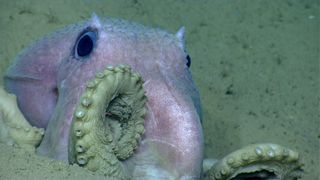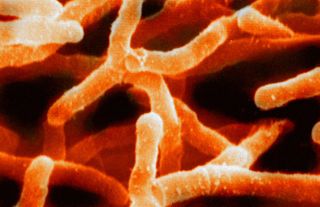There Might Be 1 Trillion Species on Earth

Calculating how many species exist on Earth is a tough challenge. Researchers aren't even sure how many land animals are out there, much less the numbers for plants, fungi or the most uncountable group of all: microbes.
Now, researchers have attempted to use the laws of math to make an estimate that includes both micro and macro life. The researchers estimated that there may be as many as 1 trillion species out there.
The research is based on scaling laws, which predict a proportional change linking two variables. For example, scaling laws apply to the change in metabolic rates as body size changes, and to the number of species found by geographical area. [Biodiversity Abounds: Stunning Photos of the Amazon]
Indiana University researchers Kenneth Locey and Jay Lennon analyzed data sources that sampled 20,376 sites for bacteria, archaea and microscopic fungi, and 14,862 sites for trees, birds and mammals. Using the total abundance of individuals, the researchers were able to work out the scaling rules that linked the number of individual organisms to the number of total species.
The method led to an estimate of between 100,000,000,000 (that's 100 billion) and 1,000,000,000,000 (that's a trillion) species of microbes on Earth.
"Until now, we haven't known whether aspects of biodiversity scale with something as simple as the abundance of organisms," Locey said in a statement. "As it turns out, the relationships are not only simple but [also] powerful, resulting in the estimate of upwards of 1 trillion species."

It has been estimated that there are 100 trillion individual bacterial cells in a single human body, and a nonillion (10^30) individual bacterial and archaeal cells on Earth, the researchers wrote Monday (May 2) in the journal Proceedings of the National Academy of Sciences. If these individuals represent a trillion or so species, that means very little is known about Earth's microscopic denizens, Lennon said in the statement. The genomes of only 100,000 microbial species have been sequenced, and only about 10,000 species have been grown in a lab, he said.
Sign up for the Live Science daily newsletter now
Get the world’s most fascinating discoveries delivered straight to your inbox.
"Our results show that this leaves 100,000 times more microorganisms awaiting discovery — and 100 million to be fully explored," Lennon said.
Pinning down exact numbers of microbial species is tricky, however. Previous estimates have pegged the number at between 10 million and a billion, according to a 2004 review paper in the journal Microbiology and Molecular Biology Reviews. A 2011 paper in the journal PLOS Biology put the total number of species at 8.7 million, but that study's methodology calculated the existence of only 10,000 bacterial species, a contradiction of the 2004 review that put the minimum known bacterial species above 35,000.
And it's not just bacteria that are the problem. Even estimates of nonmicrobial species vary wildly. Researchers reported in 2014 in the journal Trends in Ecology & Evolution that estimates of the number of species on the planet have "failed to converge over more than six decades of research." The estimates range from 0.5 million to 10 million and are often logically inconsistent, the authors of that 2014 study wrote: "For example, estimates of species richness for coral reefs have exceeded estimates for all marine species, and estimates for all marine species have exceeded global estimates for all realms combined."
On the other hand, a study published in the journal Science in 2013 suggested that where there's a will, there's a way: The authors said it would cost a mere $500 million to $1 billion a year for 50 years to describe most species on Earth.
Follow Stephanie Pappas on Twitterand Google+. Follow us @livescience, Facebook& Google+. Original article on Live Science.

Stephanie Pappas is a contributing writer for Live Science, covering topics ranging from geoscience to archaeology to the human brain and behavior. She was previously a senior writer for Live Science but is now a freelancer based in Denver, Colorado, and regularly contributes to Scientific American and The Monitor, the monthly magazine of the American Psychological Association. Stephanie received a bachelor's degree in psychology from the University of South Carolina and a graduate certificate in science communication from the University of California, Santa Cruz.
Most Popular



